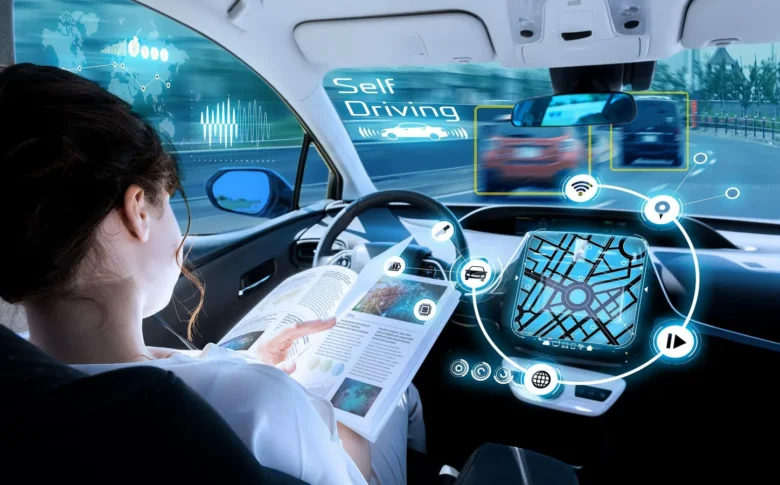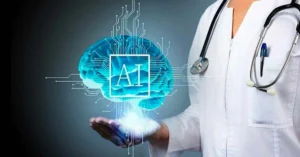Self-driving cars were once just a dream of the future, but now they are a reality. They have the potential to revolutionize the automotive industry and our daily lives. Technology, artificial intelligence, and regulations are all constantly improving, so the future of self-driving cars looks both exciting and complex. This article discusses the various factors influencing the future of autonomous vehicles, such as new technologies, safety issues, regulatory issues, and the impact on society.
Skill Improved
Self-driving cars will only become possible as technology advances. Self-driving cars are based on artificial intelligence (AI) and machine learning (ML), which allows the car to understand and respond to its environment. Companies like Tesla, Waymo, and Uber are investing heavily in artificial intelligence to help self-driving cars make better decisions.
As sensor technology such as lidar, radar, and cameras continue to develop, they give cars a comprehensive understanding of their surroundings. These sensors work with artificial intelligence programs to ensure that the robot can find its way and avoid obstacles. In addition, self-driving cars require more powerful computers and faster data processing to make decisions in real-time.
Another important factor is connectivity. The addition of 5G technology allows self-driving cars to talk to each other and things like traffic lights and road signs in real-time. Vehicle-to-everything (V2X) communications are needed to coordinate traffic, prevent car accidents, and generally improve traffic flow.
Worry about Safety
Although self-driving cars offer many advantages, safety remains paramount. Self-driving cars must be able to handle many different driving conditions and situations, such as uncertain people and bad weather. Keeping motorists, walkers, and other road users safe is a difficult task that must be thoroughly tested and proven.
One of the major safety concerns is the reliability of the artificial intelligence systems used in self-driving cars. These systems must be able to make quick decisions with safety as a priority. To address this problem, companies are using a wide range of virtual tests and real-world experiments. Redundant systems are also built so that if one component fails, others can take over the system and keep it running safely.
Another important part of security is cybersecurity. As self-driving cars become more connected, they can be hacked and attacked online. To prevent accidents and maintain customer trust, it’s important to make sure these cars are safe from the bad guys.
Regulatory Issues
Regulatory rules will play an important role in the scope of self-driving car use. Around the world, governments and regulators are working to develop rules to ensure that autonomous vehicles can safely connect to current transportation systems. These rules should cover issues such as liability, data protection, and security standards.
If a self-driving car is involved in an accident, liability is a major problem. The law makes it difficult to find out who is to blame: the vehicle manufacturer, the software maker, or the vehicle owner. To address these issues and make them clear to all involved, clear rules and laws need to be put in place.
Data privacy is another issue facing regulators. Self-driving cars create a lot of data, for example where people are and what they do. Protecting people’s privacy means ensuring that this information is collected, stored, and used in sensible ways.
Impact on Society
When self-driving cars come onto the market, they will have a huge impact on society. One of the biggest changes will be the way people travel and get around. The use of self-driving cars can smooth traffic, reduce pollution, and make travel easier for people who cannot drive, such as the elderly and disabled.
This will also have consequences for the labor market. If self-driving cars become very popular, millions of skilled drivers could be left unemployed. However, it could create new jobs in areas such as artificial intelligence development, vehicle maintenance, and cybersecurity. It is important to reskill and train employees to prepare them for these changes.
Environmental Benefits
Self-driving cars can be very good for the planet. Self-driving cars can be programmed to drive more efficiently than human drivers, find optimal routes, and use less gasoline. This could lead to less greenhouse gas pollution and better air quality.
The use of electric, autonomous vehicles will further enhance these environmental benefits. Electric vehicles do not emit any pollution into the air through their exhaust pipes, which reduces the overall carbon footprint of transportation. As self-driving electric vehicle technology continues to develop, the way people travel is likely to change dramatically, towards greener and more environmentally friendly travel methods.
Conclusion
Many factors will influence the future of self-driving cars, such as new technologies, safety issues, regulatory issues, and social impacts. As artificial intelligence, sensor technology, and connectivity continue to improve, self-driving cars will be able to operate more and more efficiently. But keeping them safe, dealing with regulatory issues, and managing their impact on society is important to integrate them into our daily lives. Self-driving cars could bring many benefits in the future, including better mobility, lower emissions, and safer roads. Whether autonomous vehicles can reach their full potential in the future will depend on the level of cooperation between technology manufacturers, regulators, and ordinary people.
FAQs
1. How does AI speed up customer service calls?
Artificial intelligence speeds up responses by using chatbots and virtual assistants to handle multiple customer issues simultaneously, answering questions immediately and dramatically reducing wait times. As a result, customers will be more satisfied and services will be provided faster.
2. Why use artificial intelligence for customer service?
When AI is used for customer service, responses are consistent and accurate, service is available 24/7, costs are reduced by automating routine tasks, and each customer receives a personalized experience tailored to their needs. Artificial intelligence also provides companies with useful information about how customers behave, helping them improve customer service.
3. What types of companies are currently using AI to improve customer service?
Artificial intelligence is used to improve customer service in areas such as shopping, banking, and healthcare. While shopping, AI chatbots answer questions about products and suggest things to buy. Virtual assistants work at banks, handling account issues and detecting fraud. AI chatbots are used in healthcare for things like initial conversations and booking appointments.
4. How difficult do you think it is to use artificial intelligence in customer service?
The biggest challenges are protecting data privacy and security, dealing with the possibility of job loss, and managing difficult or emotional exchanges that require human understanding. Companies need to keep data secure, balance automation and human interaction, and ensure human agents are prepared to handle more complex problems.
5. What is the development direction of artificial intelligence in customer service?
In the future, AI will be used in customer service to make communications more accurate and informed, combining augmented reality and virtual reality for a more immersive experience, and using predictive analytics to deliver services before they are needed. AI will also improve omnichannel support, ensuring customer conversations are smooth and consistent across all touchpoints.



